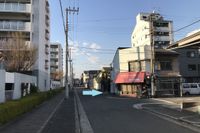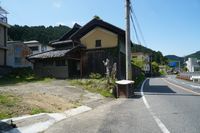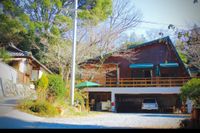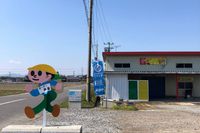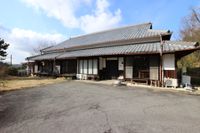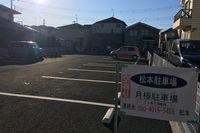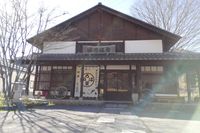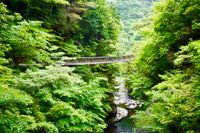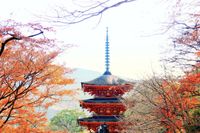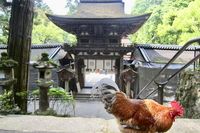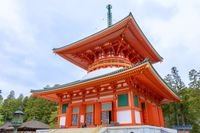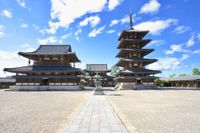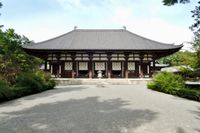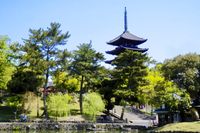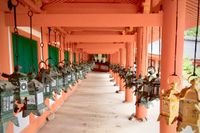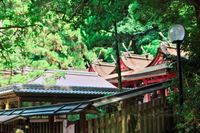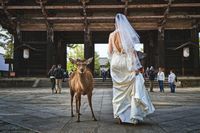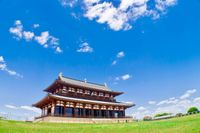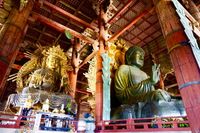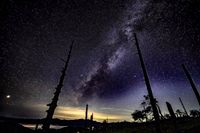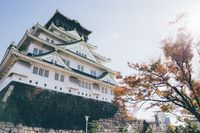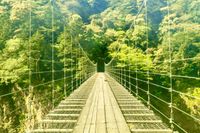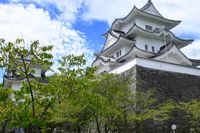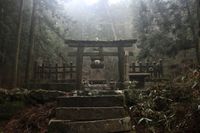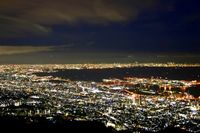3,000 JPY 〜/24 hours
4.00

8
1/5
2/5
3/5
4/5
5/5
Oyodo guest house
3,000 JPY 〜/1 night
4.00 (1)
Description
This is a guest house with a parking area (open in Spring 2020) situated in Oyodo cho, Yoshino gun, Nara Prefecture. The Yoshino and Takatori mountains are nearby, along with Asuka village, Takatori castle, as well as numerous other famous tourist spots.
Inquire about a camping station or its booking requirements up-front
Contact a HostBasic Facilities
24h Toilet
Water
WiFi
Playground
Pets Allowed
Smoking Area
Vending Machine
Washing Dryer
Waste Water Discharge
Security Cameras
EV Charger Stand
Administrator
Additional Fee Facilities
Electricity socket
Not available
Non-free Wifi
Not available
Non-free Shower
¥500/time
Onsen (Adult)
Not available
Onsen (Child)
Not available
Dustbin
Not available
Dog Park
Not available
Camping Behavior Allowed
¥1000/day
Tent (For 2-3 people)
¥1000/day
Tent (For 4-5 people)
Not available
Cooking Allowed
¥1000/day
BBQ Facilities Rental
¥1000/day
Bonfire Allowed
Not available
Nearby Facilities
Convenient Store
LAWSON Kintetsu Shimoitiguti ekimae (450m)
Supermarket
Okuwa in Oyodo (1200m)
Gasoline
Marui shokai yoshino oyodo oil station (350m)
Restaurant
Donchan restaurant (700m)
24h Toilet
Not available
Onsen
Not available
Parking space
Maximum lots:2 lot(s)
Parking Area Size:Length 5m・Breadth 2.3m・Height 制限なし
Note
Cancellation Deadline
17:00, 2 days before (Japanese time)
If you cancel your reservation after the Cancellation Deadline, cancellation fee will be applied. Cancellation rate can be checked here
Availability status
Please click a date to see the availability of car
Sun | Mon | Tue | Wed | Thu | Fri | Sat |
|---|---|---|---|---|---|---|
30 | 1 | 2 | 3 | 4 | 5 | 6 |
7 | 8 | 9 | 10 | 11 | 12 | 13 |
14 | 15 | 16 | 17 | 18 | 19 | 20 |
21 | 22 | 23 | 24 | 25 | 26 | 27 |
28 | 29 | 30 | 31 | 1 | 2 | 3 |
Sun | Mon | Tue | Wed | Thu | Fri | Sat |
|---|---|---|---|---|---|---|
28 | 29 | 30 | 31 | 1 | 2 | 3 |
4 | 5 | 6 | 7 | 8 | 9 | 10 |
11 | 12 | 13 | 14 | 15 | 16 | 17 |
18 | 19 | 20 | 21 | 22 | 23 | 24 |
25 | 26 | 27 | 28 | 29 | 30 | 31 |
Reviews
4.00(1 reviews)

りな
4.00Sun, November 15, 2020
スペースの前には、吉野川が流れており、川の流れを聞きながら泊まれます。 24時間利用可能のお手洗いは、 ゲストハウスの中ですので、 とても綺麗です。 ただ、スペースまで行く途中に、急な坂があるので、 車高が低めの車だと、厳しいかもしれません。
Translate To English
3,000 JPY 〜/1 night
4.00 (1)
Reservation Deadline Time : 1 day ago 11:00 PM
Check In
Check Out
Nearby Car Night Spots
Shin Meishin Suzuka PA (inbound) RV Station Suzuka * With Power!
¥2,200〜
/ per nightMie Yamamotocho, Suzuka-shi
4.3
(155)Nearby Activities
There is no nearby activities
Ranking Stations
Shin Meishin Suzuka PA (inbound) RV Station Suzuka * With Power!
¥2,200〜
/ per nightMie Yamamotocho, Suzuka-shi
4.3
(155)Vanlife BASE | 45 min. from Narita Airport / Perfect for campervan travel/A seaside town rich in nature/Japanese countryside town/welcome traveler
¥7,000〜
/ per nightChiba Koseki, Kujukuri-machi, Sambu-gun
5.0
(61)Nearby Drive Spots
Mitarai Valley
A valley in Yoshino-gun, Nara prefecture. As the valley is quite deep there are various waterfalls, large and small, and visitors can see the brilliant green landscape that is largely untouched by humans. The greenery and autumn leaves are said to be the best in the Kinki region.
Hasedera Temple
This is a temple built by Domyo in 727 AD, and is the branch temple of the Shingon Buzan sect main temple. The object of faith is known as Juichimen Kannnon(11-faced) and is the head temple of the Hasedeta temple group, of which there are around 240 in Japan. As one of Japan's most prominent Kannon sacred sites in Japan, it attracted the faith and reverence of many aristocrats and nobles. Situated in the middle of Mount Hatsuse, in April and March, around 7000 Moutan Peony flowers of 150 varieties bloom in the area, which had led the temple to be also known as the "Flower temple".長谷寺 © w_0705_ クリエイティブコモンズライセンス(表示4.0 国際)https://creativecommons.org/licenses/by/4.0/
Isonokami Jingu Shrine
This is a shrine that was built in 570 AD. It is one of Japan's oldest shrines, housing the great God Futsunomitama no Okami, and was the main temple of the ruler of military family, known as Mononobe clan. Even amongst old faiths, it was known as a particularly distinguished shrine. There are around 40 chickens in the area which are said to be underlings to the shrine gods. If you hear the chickens crying out, it is said to bring good fortune.
Kongobuji Temple
This is a mount Koya Shingon sect central temple built in 816 AD under the instruction of the great teacher and poet, Kukai. The main object of worship is known as Yakushi Nyorai, and it is registered as a World Heritage Site. This area is a sacred buddhist site located at the top of the mountain, with an altitude of 1000 meters, and around 100 temples are concentrated in this area. In the temples further into the area contain memorial towers to great figures such as Oda Nobunaga, Shinran, Date Masamune and others. One can also find the tombstone of Takeda Shingen here, as well as as as the mausoleum of Uesugi Kenshin, which is a building which also has the same function as a shrine.
Horyuji Temple
This is a temple built in 607 AD by Prince Shotoku, and is a branch temple of the Shotoku sect head temple. It is registered as a world heritage. The object of worship is known as Shaka Nyorai and during the Sengoku era(1467-1600), was restored by the Toyotomi clan and Tokugawa families, as well as significant restoration between 1934 and 1985. Over a long period of time, it has been restored to its former glory. It is a treasure trove of cultural assets with 17 national treasures and 35 assets of cultural importance.
Toshodaiji Temple
This temple, which was a branch of the main temple of the Rishu sect, was built in 759 AD by Jianzhen (known as Ganjin in Japanese), a Chinese monk who singlehandedly spread the teachings of Buddhism in Japan. The main object of worship is known as Rushana buddha and is registered as a World Heritage Site. The temple is significant in that is preserves the original 8th century Nara Tenpyou culture, and has the golden hall and auditorium that was constructed during the Nara era(710-794). The name comes from the fact that Jianzhen spent his later years at the temple.
Kofukuji Temple
This is a temple built in 669 AD by Fujiwara Fuhito, amongst others, and is a branch temple of the Hoso sect main temple. The main object of worship is known as Shaka Nyorai, and is registered as a national treasure. It was considered as one of the four great temples during the Nara period(710-794) and one of the seven major temples during the Heian period(794-1185), and increased in prominence through sharing teachings with Kasuga Taisha Shrine. There are numerous cultural treasures such as the wooden deva king statue.
Kasuga Taisha Shrine
This is a shrine that was built in 768 AD to enshrine the Kasuga gods Nakatomi clan and Fujiwara clan. The Kasuga Gods are known as Takemi Kazuchi no Mikoto(Kashima Jingu Shrine), Futsunushi no Kami(Katori Jingu Shrine), Amenokoyane no Mikoto and Himegami(Hiraoka Shrine). It is the head temple of the Kasuga shrine group, of which there are around 1000 in Japan, and it is said that deer are the underlings to the shrine Gods, from the legend that Takemi Kazuchi no Mikoto rode here on a white deer. It is registered as a World Heritage Site.
Hiraoka Shrine
This is a shrine that is said to have been built in 660 BC. The original shrine Gods are known as Amenokoyane no Mikoto, Hime no Omikami, and subsequently the Futsunushi no Kami(Katori Jingu Shrine) and Takemikazuchi no Mikoto (Kashima Shrine) were deified to the shrine, but where then moved to the Kasuga Taisha Shrine. Because of this, the shrine is sometimes known as the "ex-Kasuga shrine". Many important figures of their time such as Taira KiyomoriMinamoto YoshitsuneMinamoto YoritomoAshikaga Takauji and Toyotomi Hideyori visited this shrine, which possesses what is known as "an ancient sanctuary".
Nara Park
Registered as a World Heritage Site, this is a famous deer park. Around 1,200 wild deer inhabit the area, and is popular for feeding the deer with "Deer senbei" (a type of savoury biscuit). The deer is said to be a god of Kasuga Taisha Shrine, which is in the local area, and Takemikazuchi is said to have come to the area from Kashima Jingu Shrine in Ibaraki riding on a deer when the shrine was built.
Heijo Palace
A town built by Empress Genmei in 710 AD, it is a registered world heritage site. The town was created as a capital to practice the law of the land and was 2,500 hectares in size. The model of the city was based on China's city of Choan City. The Suzaku gate and imperial council hall have been restored, allowing visitors to feel the history of the original town.
Todaiji Temple
This temple was built in 741 AD under the instruction of Emperor Shomu, and is a branch temple of the Kegon sect head temple. The temple's buddha statue known as the "Daibutsu of Nara" was built, and became a place of hope and support from Emperor Shomu, during famine, earthquakes and illness of the time. There are many items of cultural importance such as the largest wooden buddhist temple in the world, and is registered as a national heritage site.
Odaigahara
This is a mountain plateau at an altitude of 1695 meters, on the border of Nara and Mie prefectures. It is a secluded area where you can see the spectacular views of the Milky Way, shining in a clear night sky. Stores, restaurants, accommodation facilities are also open close around the visitors' centre, and it is a popular place for astronomical observation.※Credit:Tsubasa Mizoguchihttp://bit.ly/2MI1vQs
Osaka Castle
This is one of Japan's three largest castles built by Toyotomi Hideyoshi in 1583. It was also the scene for the great battle known as "Osaka no Eki", fought between the Toyotomi clan and Tokugawa noble families after the death of Toyotomi Hideyoshi. The current castle tower was built by the Tokugawa family after the death of Toyotomi, and is known as one of the great symbols of Osaka. It is familiar to many people and is known as the "Taikohan Castle".
Dorokyo Gorge
This is a canyon upstream of the Kumano River. From the upstream, it is known as OkutoroKamitoroShimotoro, and the upper stream of the river is famously known as the "Doro Haccho". The valley offers spectacular geological views, where there are huge rock formations, strange rocky formations and seemingly endless cliff formations. The scenery from the 84 meter long suspension bridge "Yahiko Bridge" is a particular highlight.
Iga Ueno Castle
This is a castle that was built in 1585 under the order of Tsutsui Sadatsugu. During the Sengoku era(1467-1600), it was the main base for the Iga Ninjas, and is also known as "Hakuho castle" due to its white and elegant appearance. Underground there is an Iga Ninja museum where visitors can experience the true world of Ninjas.
Byodoin Temple
This is a temple built in 1052 by Fujiwara Yorimichi and is registered as a World Heritage Site. The main object of worship is known as Amida Nyorai, and displays the luxurious aristocratic culture of Fujiwara clan. In the central island of the pond, there is what is known as the phoenix temple, and it appears as if there is a palace floating in the middle of the pond in a treasure paradise. You can see the phoenix design on 10 yen coins and 10,000 yen notes.
The Kumano Kodo Pilgrimage Routes
This place is a collective term for the pilgrimage road to the Kumano three shrines (Kumano Hongu Taisha、Kumano Hayatama Taisha、Kumano Nachi Taisha), and is registered as a World Heritage Site. The area is a natural place of worship where people from all walks of life, from the emperor and aristocrats, to ordinary people come to visit this area for worship. The area is also popular as a hiking destination.
Daigoji Temple
This is a Shingon sect temple built by Shobo in 874 AD, and is a branch temple of Shingon sect head temple. Yakushi Nyorai is the primary object of worship, and the temple is registered as a World Heritage Site. Although it was destroyed during the unrest of the Muromachi Era(1336-1573), it was reconstructed as the stage of a famous play starring the hero Toyotomi Hideyoshi, known as the "Daigo no Hanami". It is also famous for cherry blossom viewing.
Mount Rokko
This is a 931 meter tall mountain in north Kobe. The sky observation deck as well as the observation area that looks down into the landscape below is named as one of Japan's three best night views, where one can see Osaka, Seto Inland Sea and Shikoku. This view is also known as "Kobe's 10 million dollar view".







